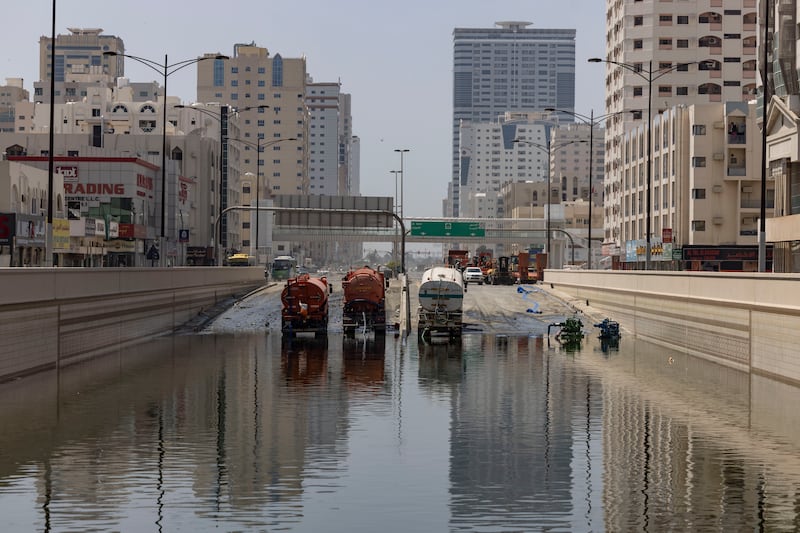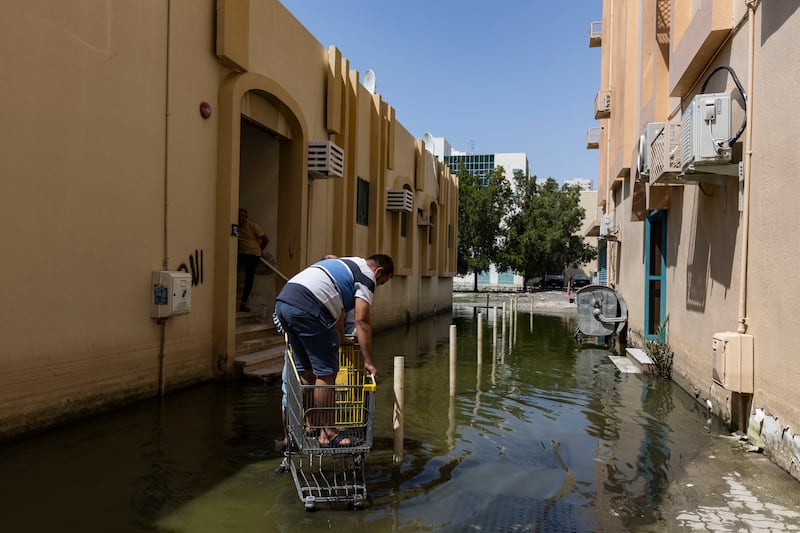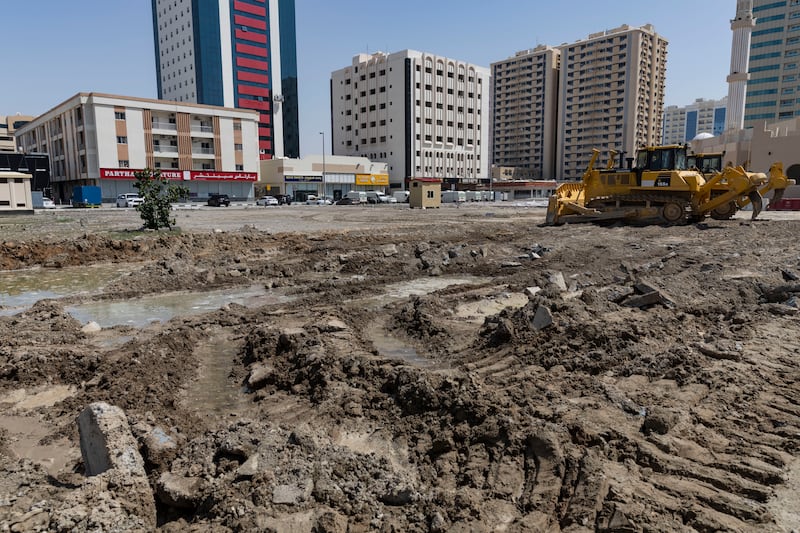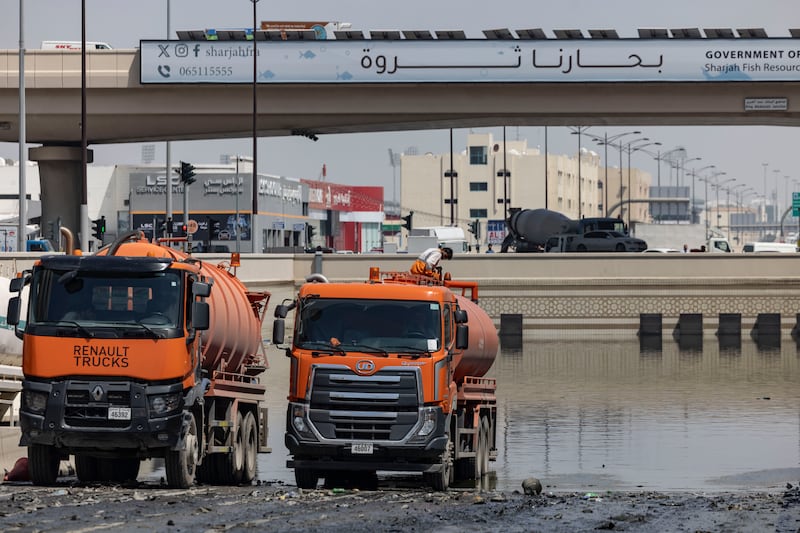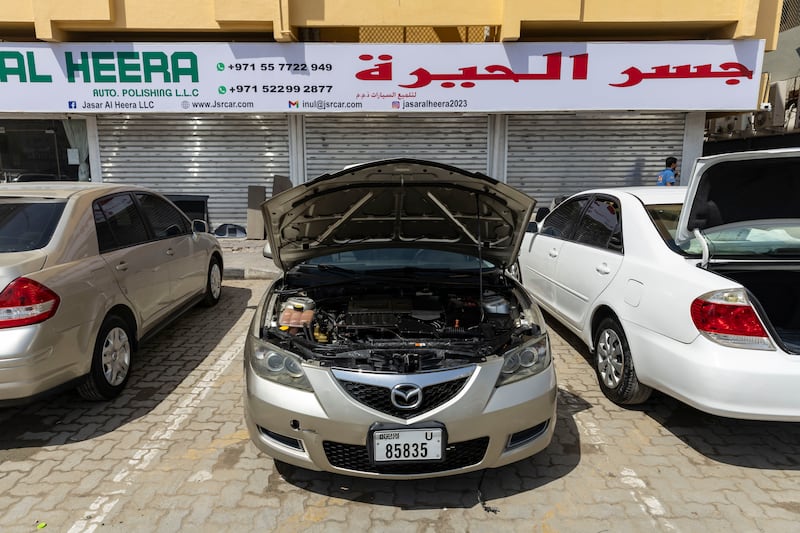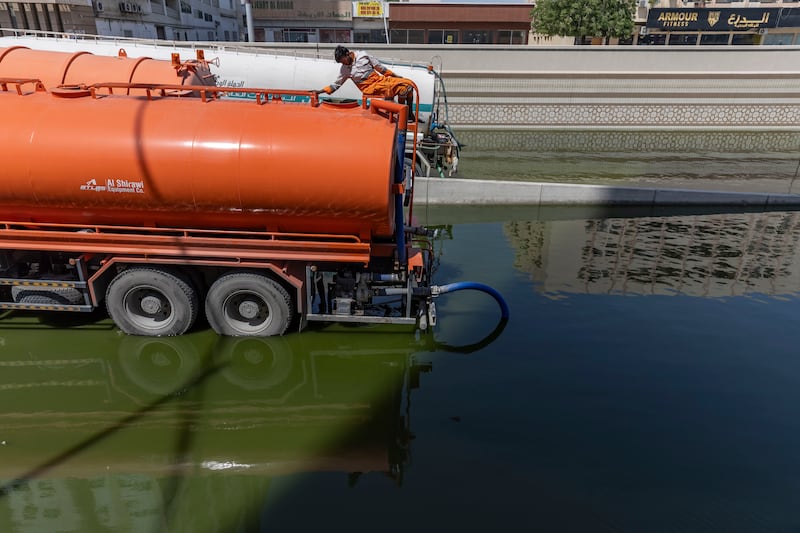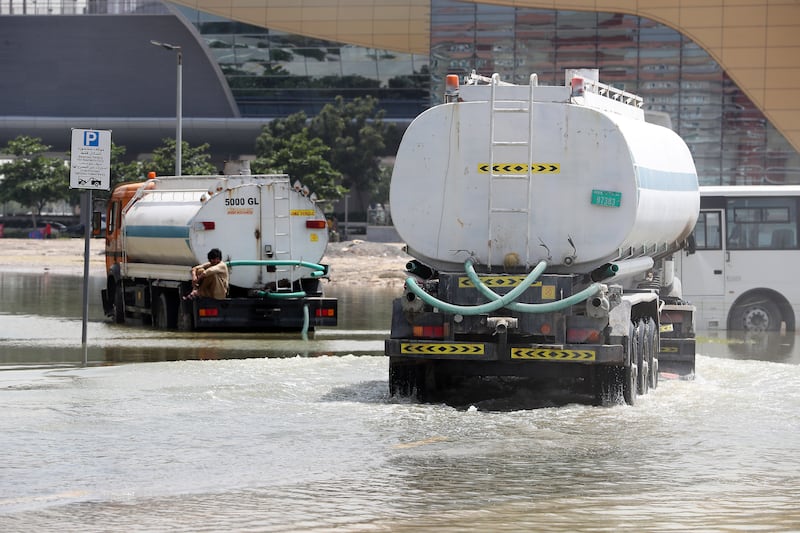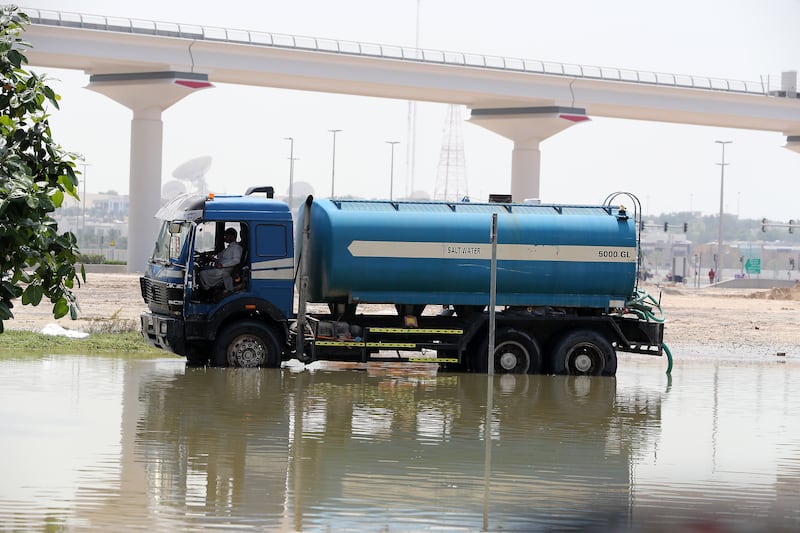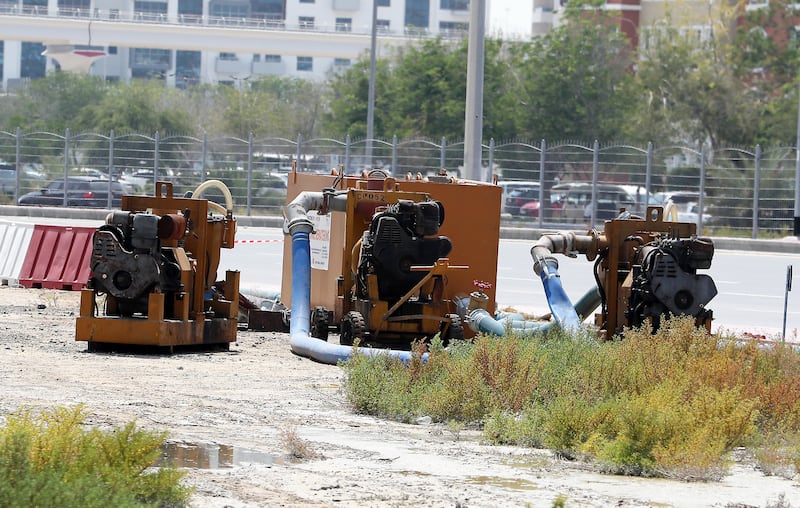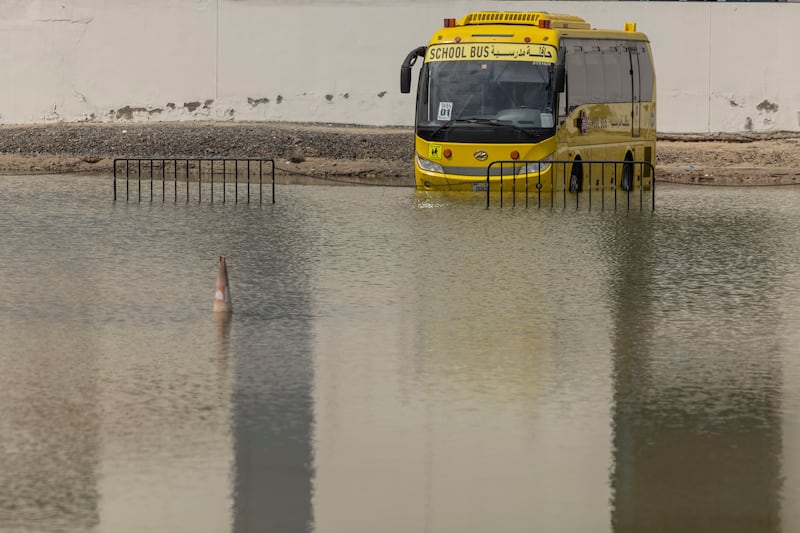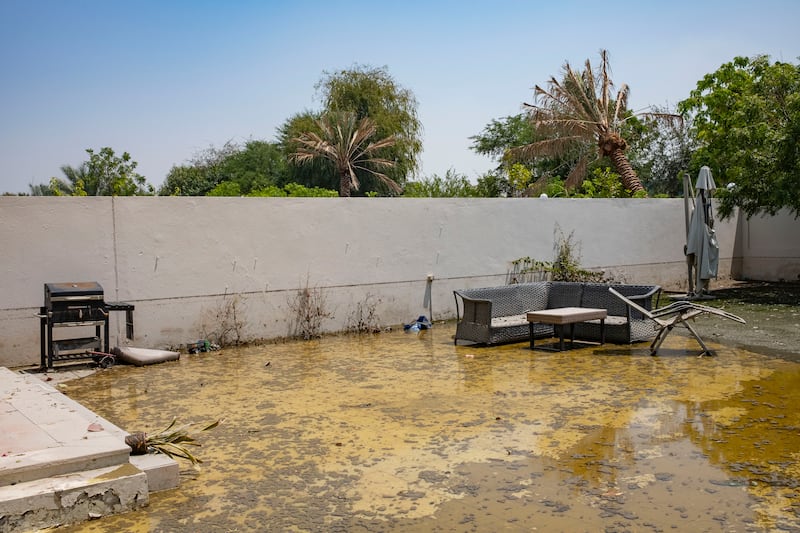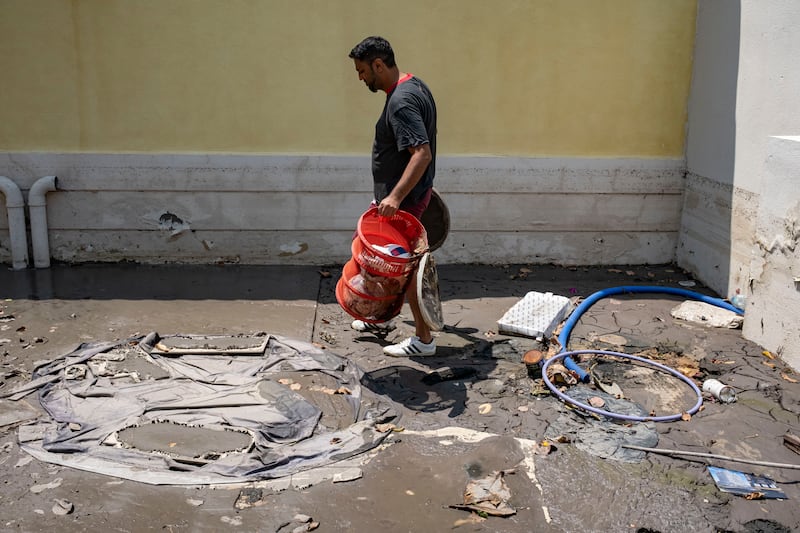The rainstorms that struck the UAE and Oman last week were between 10 per cent and 40 per cent more intense due to climate change, a major research body has said.
The World Weather Attribution (WWA) research initiative found greenhouse gas emissions caused the storms to be far more destructive than they would have been in the pre-industrial era.
The El Nino climate pattern and global warming together meant the storms were particularly destructive.
Twenty people died in Oman and four were killed in the Emirates when a series of storms battered the Gulf nations. Dubai and Sharjah were struck by four waves of rainstorms, leaving large parts of the cities badly flooded.
“If it had not been an El Nino year, it would have not have rained in this way. But at the same time, if it had not been for climate change, it would not have rained as heavily as it did,” said Friederike Otto, a senior lecturer in climate science at Imperial College London and a WWA researcher.
“Both were important factors for driving this event.”
A separate team of scientists in January found that by the middle of this century, annual rain in the UAE may rise by up to 30 per cent. More than 250 millimetres (10 inches) fell on Dubai over two days last week.
Despite modern infrastructure and an early-warning system, WWA said 80 per cent of people in Oman and 85 per cent of those in the UAE live on low-lying, flood-prone ground.
Speaking to The National, Dr Hylke Beck, assistant professor at King Abdullah University of Science and Technology in Saudi Arabia, said the Gulf nations will need to prepare for a wetter future.
"The general consensus in the scientific community is that as the atmosphere warms up, it can hold about seven per cent more moisture for every degree Celsius that it warms," said Dr Beck, who co-authored the Climate Futures Report, a major analysis published last year that looked at the effects of climate change on the Arabian peninsula.
"That means when there’s more water available … this can lead to much heavier rainfall."
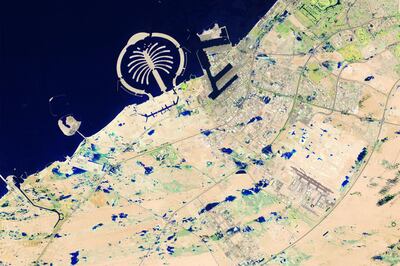
By the end of the century, the most severe rainfall event in the UAE in any given year is expected to be 10 to 15 per cent more intense than is the case now, according to climate models based on a "moderate" greenhouse gas emission scenario, Dr Beck said.
The Climate Futures Report also highlighted the risk that rising sea levels would contribute to increased coastal flooding and erosion, storm surges and saltwater contamination of groundwater.
Another notable rainfall event happened in 2016, when Dubai experienced more than 240mm of rainfall and suffered severe flooding.
Riyadh and Jeddah are among the other cities in the region that have been affected by deadly flash floods in recent decades.
Another scientist who researches climate change in the region, Prof Jos Lelieveld, of the Max Planck Institute for Chemistry in Germany and The Cyprus Institute, said it was not possible to say that a single event, such as the recent extreme rainfall in the UAE, had happened because of climate change.
However, Prof Lelieveld said that while it may have taken place without climate change, it would have been less likely.
"You can say in general these types of events are likely to become more common because of climate change," he added.
Urbanisation trapping flood water
"You cannot make a specific prediction for Dubai, but in the Middle East, not so much in the summer but in the winter, spring and to some extent in the autumn, such events are more likely in the future."
The region is particularly vulnerable to severe flooding for a number of reasons, among them that most rainfall tends to be "short duration and very intense", Dr Beck said.
The soil in the region is often very hard and dry, so it does not absorb water easily, Dr Beck said, while there is little vegetation to slow run-off.
Also, there has been a massive increase in the scale of urban areas, so there is less bare ground to absorb rainwater. Population increases mean the risk that flooding will lead to casualties is greater.
The recent storm and the one in 2016, Dr Beck said, are the result of what it called a mesoscale convective system, which involves moist air from the Arabian Gulf converging in regions of low pressure.
The air then rises, expands and cools, causing the water vapour to condense and form clouds that result in significant rainfall.
Research has shown, Dr Beck said, that mesoscale convective systems have increased in duration over the UAE during the past two decades.
"Natural hazard early warning systems are very important to prepare and respond and reduce the damage and loss of life and in the case of floods these early-warning systems have proven to be super useful," he said.
"The drainage systems were really put to the test and they didn’t quite hold up – the airport was flooded, roads. This shows how important it is to beef up the flood defences, improve the stormwater infrastructure and the drainage systems."
Creating floodwater infrastructure, including lakes and drainage systems, that can cope with the most severe events is not easy, he acknowledged, given the "huge amounts" of water that appear in a short space of time.
Aside from actually creating the drainage systems, Dr Beck said maintenance was essential, as they easily become clogged up with sand if not cleared out regularly.
"It’s very hard to maintain these reservoirs, these infrastructure drainage systems, very costly," he said.
"We don’t know what’s going to happen with climate change. Perhaps they’re sufficient for current conditions but not for future conditions."
